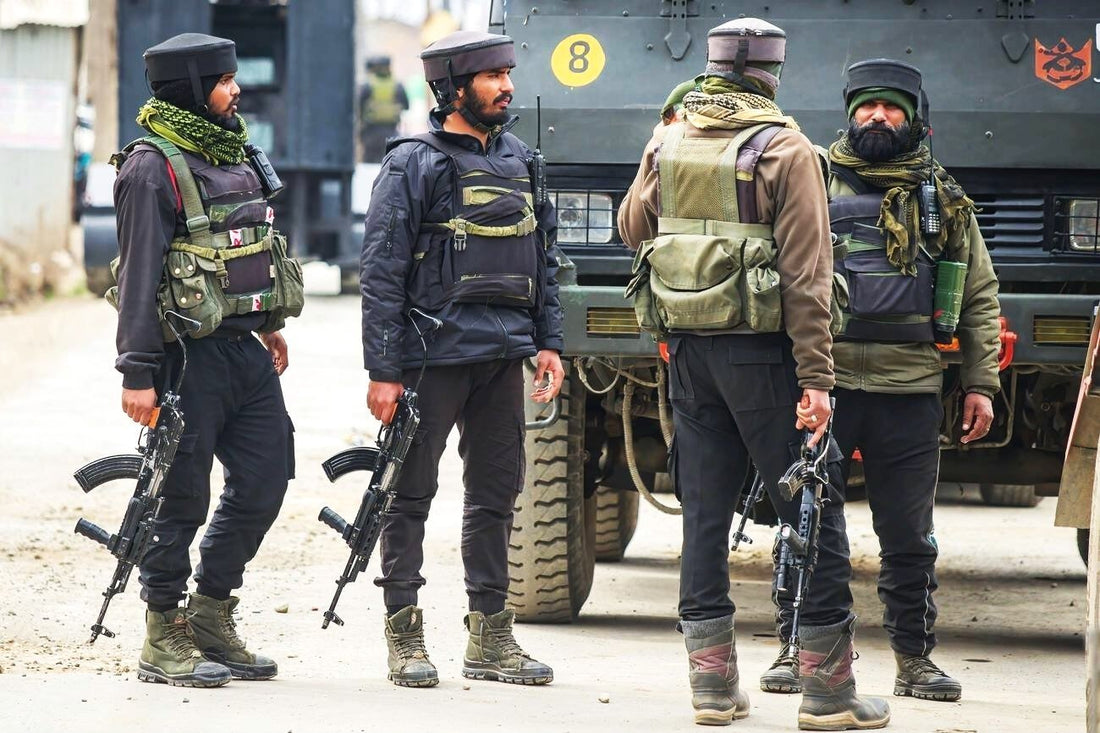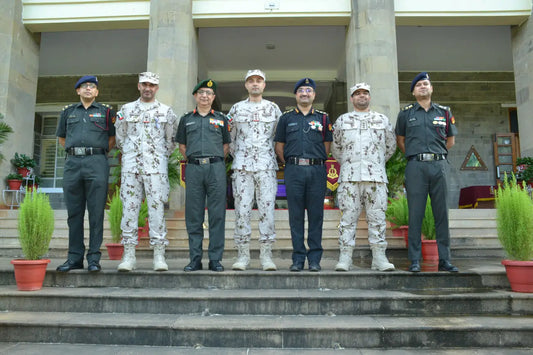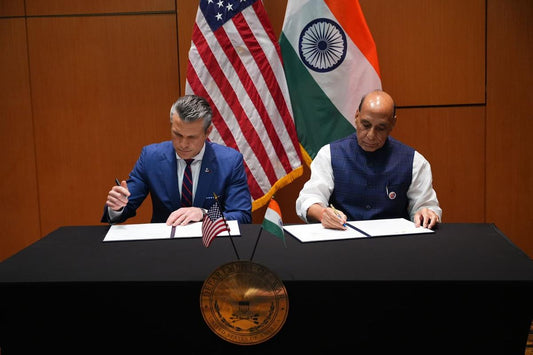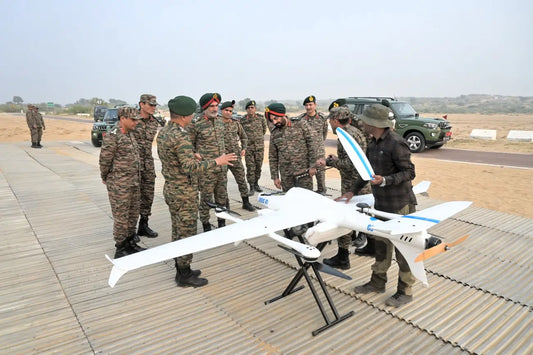Guide to Joining the Rashtriya Rifles: Step-by-Step Entry Process

To join the ranks of the Rashtriya Rifles (RR), a key segment of the Indian Army focusing on counter-insurgency operations, one must understand the pathways involved. Established in 1990, the RR primarily targets militancy in Jammu and Kashmir and exemplifies a blend of combat skills, tactical expertise, and cultural awareness. This elite force is renowned for its operational significance, and serving within it is considered a prestigious achievement. However, the process to join the RR is not straightforward. Candidates must first enlist in the Indian Army as either a soldier or an officer before undergoing specialized training to prepare for the unique challenges of deployment with the RR.
The following guide provides a detailed overview of the steps required to join the Rashtriya Rifles, offering the necessary information to navigate this demanding route successfully.
Historical Context
The Rashtriya Rifles were formed during a pivotal period in Indian history, coinciding with the rise of militancy in Jammu and Kashmir in the late 1980s. Recognizing the growing threat, the Indian Army established the RR as a specialized force to tackle insurgency. Drawing soldiers from various infantry regiments, the RR is characterized by operational flexibility and a focus on intelligence-driven warfare, making it an integral part of India's security framework in the region.
Over time, the RR has gained a reputation for effectively addressing complex security challenges, often operating in difficult geographical terrains. It benefits from the diverse backgrounds and skills of its personnel, ensuring a comprehensive approach to operations. Consequently, a posting in the RR not only involves significant responsibility but also serves as a crucial career milestone for officers and soldiers in the Indian Army.
Joining the Indian Army: The First Step
To become a member of the Rashtriya Rifles, candidates must first join the Indian Army. The entry procedures differ based on the aspirant's goal of becoming either an officer or a soldier (Jawan).
For Officers
-
Examination Pathways:
- National Defence Academy (NDA): The NDA accepts candidates aged 17.5 to 23 years who have completed their 10+2 exams. Admission is determined by a written examination followed by an interview conducted by the Services Selection Board (SSB).
- Combined Defence Services (CDS): Targeted at graduates aged 19-25, the CDS exam is administered by the UPSC. Successful candidates undergo SSB interviews.
- Technical Entry Scheme (TES): Designed for those with a 10+2 qualification in Physics, Chemistry, and Mathematics, focusing on engineering pathways.
- Short Service Commission (SSC): For graduates, SSC provides a direct entry point, leading to placements in officers’ training academies.
- Officers Training Academy (OTA): Offers direct entry for certain graduate streams, known for its rigorous training program.
-
Training Regimen:
- Candidates selected through the NDA undergo three years of training at the NDA, followed by a year at the Indian Military Academy (IMA).
- OTA entrants undergo approximately 49 weeks of training before they are commissioned.
For Soldiers (Jawans)
-
Recruitment Process:
- Soldiers can apply through various channels with educational qualifications ranging from 10th to 12th grade. Candidates are typically between 17.5 and 23 years of age.
- The Indian Army organizes recruitment rallies nationwide to facilitate the process, improving accessibility for applicants.
-
Training:
- Once selected, recruits undergo basic training at designated centers, focusing on military discipline, physical fitness, and essential combat skills.
Serving in the Indian Army
After enlisting, the next critical step is to actively serve in the Indian Army, gaining essential military experience and competencies.
-
Gaining Experience:
- New soldiers and officers participate in various training courses that enhance tactical and technical skills.
- Service is crucial to understanding military protocols and operational efficiency. Typically, personnel are expected to serve for several years in their parent regiment before qualifying for RR deputation.
-
Physical and Mental Fitness:
- Rigorous physical training is essential. The demands of the RR require personnel to maintain exceptional fitness levels, sharpened through various Army training modules.
- Completing mandatory weapons courses and gaining experiential knowledge during assignments also prepares candidates for deployment with the Rashtriya Rifles.
Deputation to Rashtriya Rifles
Joining the Rashtriya Rifles involves a selection process emphasizing expertise gained through prior military service.
-
Deputation Process:
- The RR does not conduct direct recruitment. Instead, personnel are selected from existing infantry regiments or other units based on experience and performance.
- Selection criteria include operational effectiveness, leadership capabilities, and overall contributions to the Indian Army.
-
Pre-Induction Training:
- Selected candidates undergo approximately four weeks of specialized pre-induction training at Corps Battle Schools.
- This training emphasizes skills relevant to counter-insurgency, urban warfare, and familiarization with combat environments in Jammu and Kashmir. It also includes crucial instruction on handling improvised explosive devices (IEDs) and navigating insurgency-affected regions.
-
Cultural and Language Training:
- Given the sensitivities associated with operations in J&K, personnel receive insights into local cultures and languages, essential for building rapport with local populations and executing successful operations.
Experience and Advantages of Serving in Rashtriya Rifles
Service in the RR is highly esteemed and provides numerous benefits, making it an attractive option for many personnel.
-
Valuable Experience:
- RR postings are known for their operational significance and the intensity of tasks involved. The experience gained in RR can be a significant advantage for future postings or career advancements within the Army.
-
Compensation:
- Personnel serving in the RR receive a salary that is approximately 25% higher than their counterparts in regular Army postings, along with additional benefits like risk allowances and operational benefits.
-
Exceptional Readiness:
- The nature of the work requires soldiers and officers to maintain a high state of readiness. They often operate in challenging terrains, demanding mental resilience, tactical competence, and physical strength.
Challenges and Potential Solutions
While the path to joining the Rashtriya Rifles is structured, it is not without challenges.
-
High Competition:
- Due to the elite status of the RR, competition for selection during deputation is intense. Many candidates may face rejection based on various performance metrics.
- Solution: Focus on enhancing personal skills, participating in additional training programs, and seeking mentorship within the Army to improve prospects.
-
Demanding Nature of Service:
- Life in the RR is marked by high operational stress. Deployments can affect mental health and wellbeing.
- Solution: The Army offers various support mechanisms for mental health, and individuals are encouraged to engage in self-care, maintain open communication with superiors, and utilize available support structures.
Future Trends and Predictions
Looking forward, the Rashtriya Rifles are likely to adapt to evolving security challenges.
-
Emphasis on Technology:
- As warfare increasingly incorporates technology, RR will likely emphasize upskilling personnel in tech-related areas such as drone operations and cyber warfare.
-
Greater Collaboration:
- With changing insurgency dynamics, increased inter-agency collaboration between the RR and civil authorities could enhance operational efficiency and community engagement.
-
Focus on Psychological Preparedness:
- As the psychological demands of combat operations evolve, the Army may prioritize mental resilience training for personnel before and during deployment.
Conclusion
Joining the Rashtriya Rifles signifies a commitment not just to military service but to the heightened responsibility of counter-insurgency operations, often under challenging conditions. By first becoming a part of the Indian Army through established pathways, candidates can pave a credible path towards this esteemed force.
Whether preparing for entrance exams, honing physical fitness, or gaining insights into military life, the journey to the Rashtriya Rifles requires dedication, resilience, and a passion for service.
For those aspiring to this challenging yet rewarding path, the first step is applying for Indian Army recruitment or exploring officer entrance exams. Diligent preparation, investing in military training, and building foundational skills will ultimately empower one to serve in one of India's most distinguished military formations. Though demanding, the rewards—a career filled with honor, discipline, and impact—are well worth the effort.



















